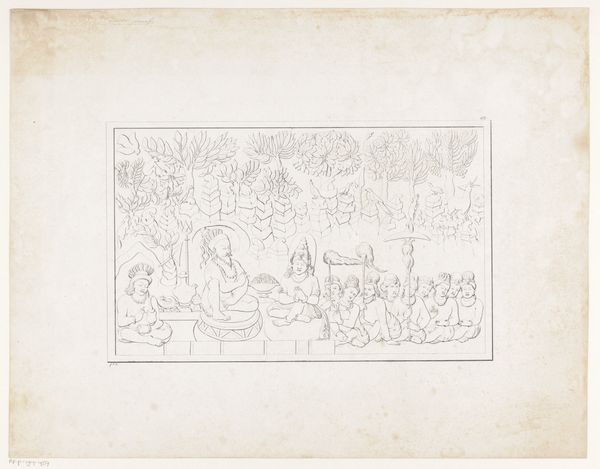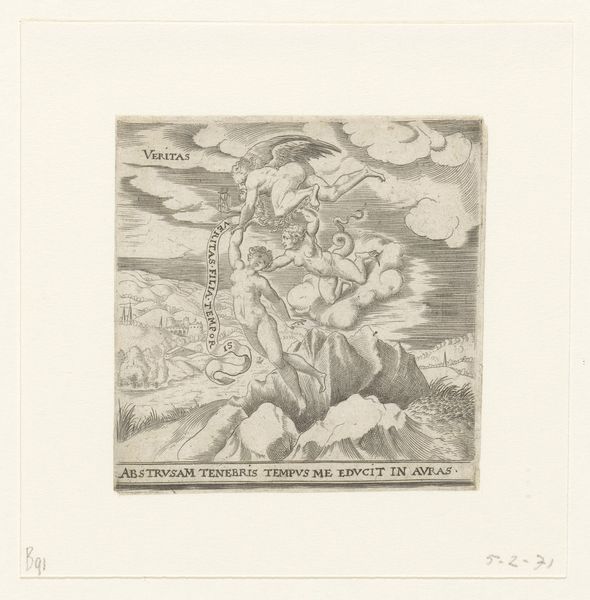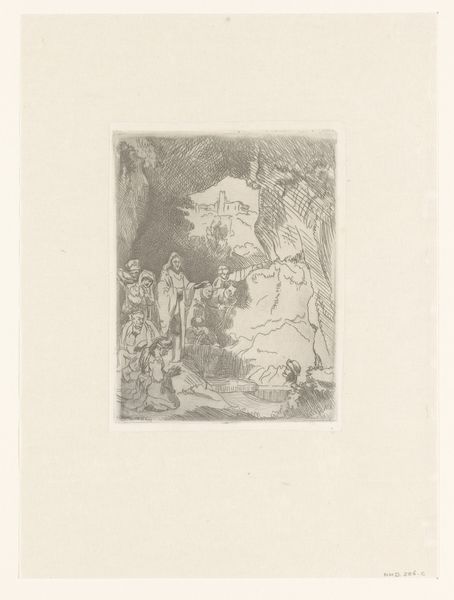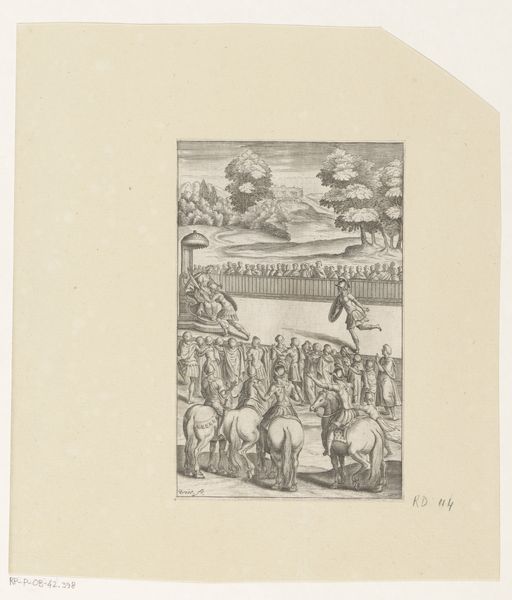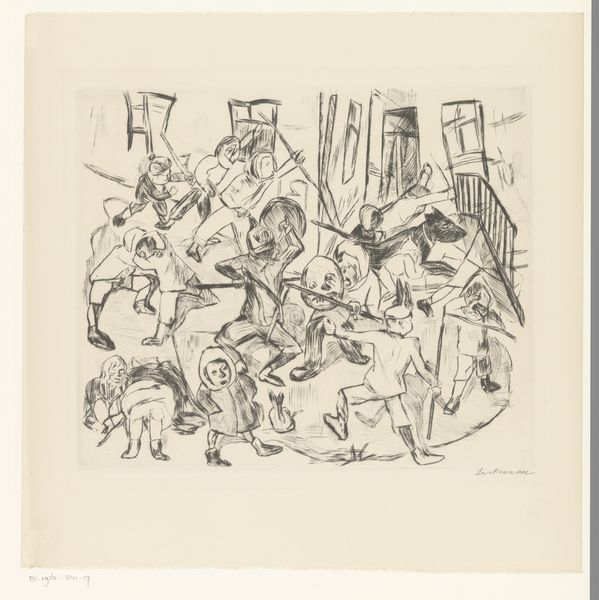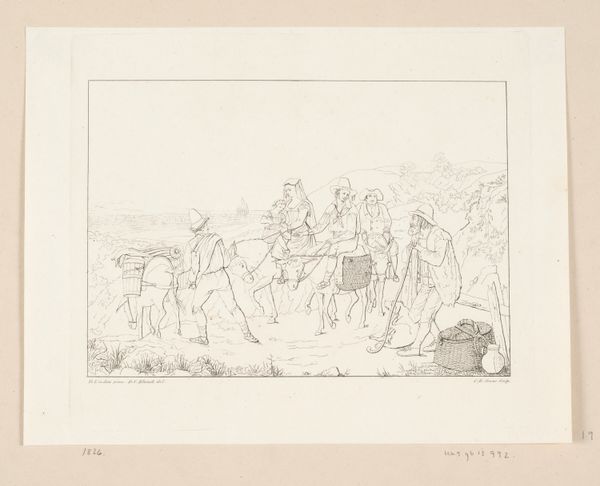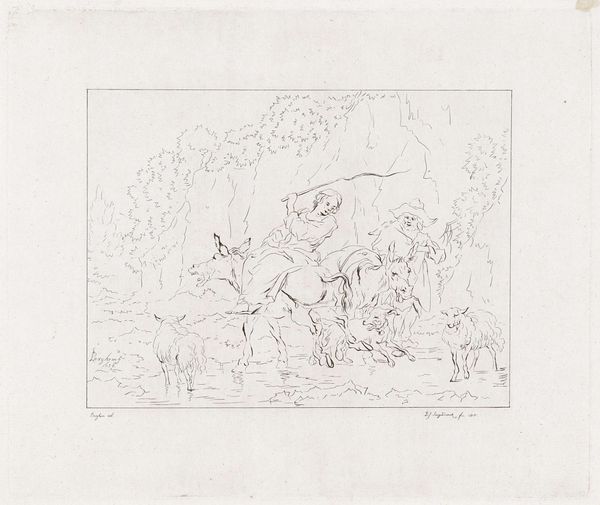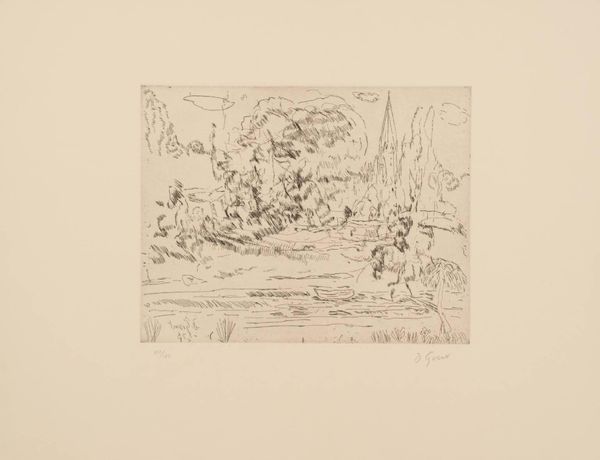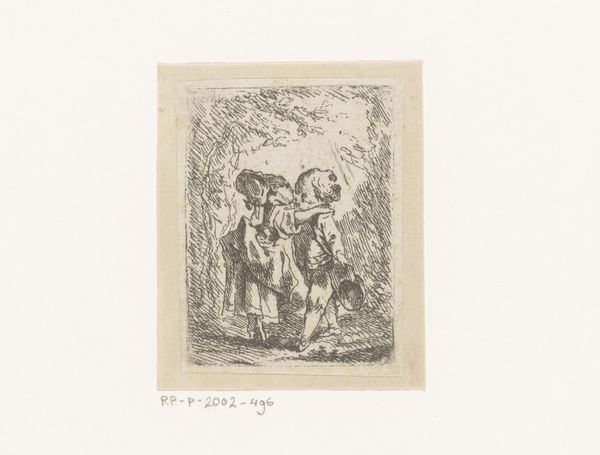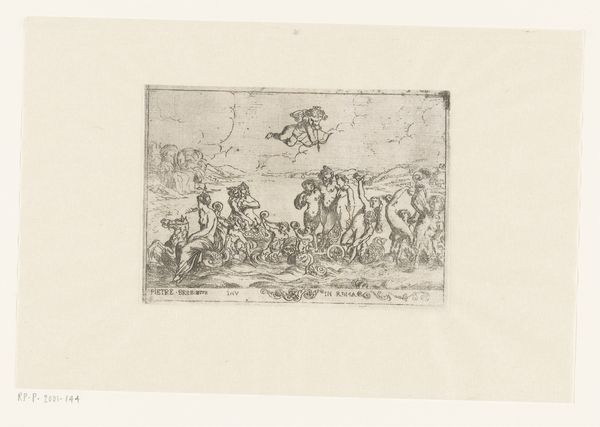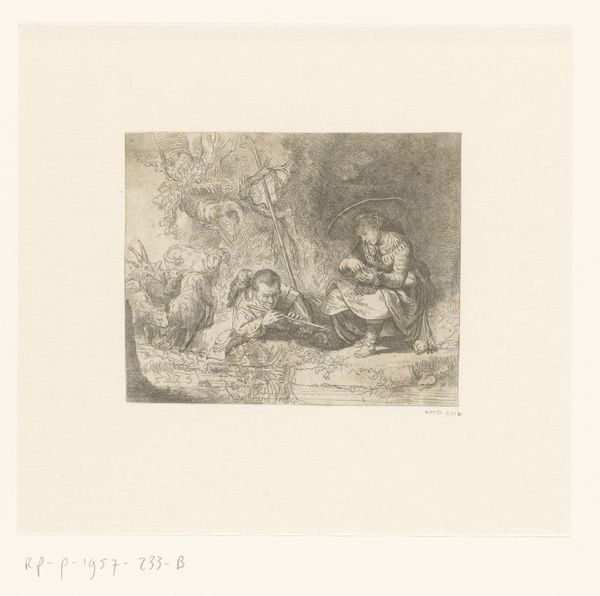
Dimensions: height 134 mm, width 137 mm
Copyright: Rijks Museum: Open Domain
Curator: Looking at Daniel Nikolaus Chodowiecki's etching from 1768, "Karavaan," I am immediately drawn into its stark, miniature world. There is something dreamlike and fleeting about the etching, hanging on the verge of fading. The whole thing almost seems to shiver with possibility. Editor: What a charmingly compact procession! It has that old-world feel. It is not a celebration or parade, just everyday life. It seems like a social commentary, condensed into a series of elegantly scrawled lines. Is it melancholic, do you think? Curator: It has a bittersweet tone to me. What grabs my eye is that division between the procession in the foreground, and what feels like this bizarre sketch of sleeping faces, animals perhaps. One dreams and the other toils? Maybe that is too facile. The artist sets the tone with these upper images, the etching looks at those in comfort against those on their difficult passage? Editor: Interesting reading of those sketched faces, are they like subconscious projections looming over our caravan's real journey? Or a premonition of their final slumber, since these could well be a people traveling through very rough territories where life and death mix on the road? Curator: Yes, exactly that unsettling potential. This artist liked social satire, I believe? This etching, printed on paper, is quite tiny. Despite its small size, its implications are massive – it encapsulates a whole world of human endeavor, of dreams, of anxieties, all wrapped up in one fleeting moment in time. I see social observation, in a deceptively simple form, with those on horses perhaps better positioned than those following? Editor: The linear quality here speaks volumes, right? I notice the economy of detail is quite cunning, managing to capture the mood, the motion. If one knows what symbols mean in cultural terms, you have everything needed to construct an interpretation. I wonder how much a modern audience, perhaps even Chodowiecki's own audience in 1768, would've gotten from these layered signifiers? Curator: Symbols and meaning have surely altered over the centuries, so that’s impossible for us to grasp in full. Perhaps it would be better to say we respond emotionally, regardless of historical specifics. Maybe "Karavaan" continues to resonate because its symbolism, even when lost in time, taps into something elemental in the human experience. I, for one, find its bittersweet charm strangely enduring, what do you think? Editor: For me, it distills life’s essentials; a delicate dance of power and vulnerability. And those drowsy, floating faces, are now keeping me awake, pondering their weight and our interpretation of them.
Comments
No comments
Be the first to comment and join the conversation on the ultimate creative platform.
